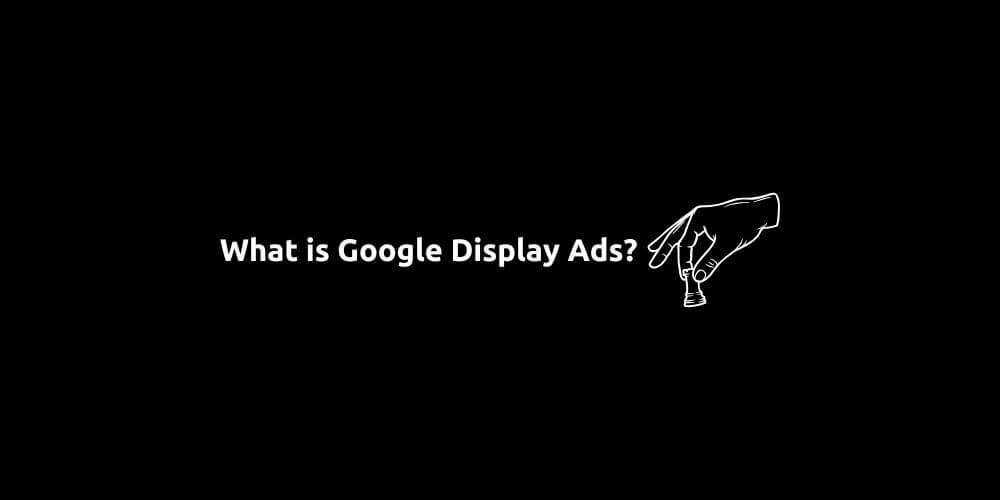What is Google Display Ads?
In the world of digital marketing, display advertising is a highly effective method of capturing audience attention and driving brand awareness. Unlike traditional advertising, which relies on television, radio, or print media, display ads leverage digital platforms to reach users where they spend most of their time—on websites, apps, and social media.
These ads can take various forms, including banners, images, videos, and interactive content. Their primary objective is to engage users and encourage them to take a desired action, such as clicking on an ad to visit a website, signing up for a service, or making a purchase.
There is nothing like not mentioning Google Display Ads while talking about display advertising, of course. As you may already know, Google’s Display Ads are the number 1 display advertising solution in digital marketing. There is a solid reason for it. Google Display Ads, allows advertisers to strategically place their ads on relevant websites and apps, targeting specific audiences based on interests, behaviors, and demographics. This level of precision enables businesses to enhance brand awareness, generate leads, and increase conversions efficiently.
Content:
- How Do Google Display Ads Work?
- Types of Display Ads
- Benefits of Display Advertising
- Challenges of Display Ads
- Best Practices for Effective Google Display Ads
- How to Get Started with Google Display Ads?
How Do Google Display Ads Work?
Google’s Display Ads function through Google Display Network (GDN), which serves as the intermediary between advertisers and Google Ads. Advertisers create visually appealing ads and set targeting parameters, such as demographics, interests, browsing behavior, and remarketing strategies, to ensure their ads reach the most relevant audience.
When a user visits a website or app that is part of Google Display Network, an algorithm determines which ad to display based on relevance and bidding strategies. The bidding process involves real-time auctions where advertisers compete for ad placements.
The goal is to serve the right ad to the right user at the right time, increasing the likelihood of engagement and conversions. Advanced targeting options and machine learning-driven optimizations make display advertising an indispensable tool for businesses seeking to maximize their digital marketing impact.
Types of Display Ads
Display ads come in various formats, each designed to achieve specific marketing objectives.
Banner ads, which are one of the most common types, are static or animated images placed in prominent positions on web pages to grab users’ attention.
Video ads, on the other hand, provide a more dynamic and engaging experience, often appearing before, during, or after streaming content.
Native ads seamlessly integrate into the website’s content, making them less intrusive and more likely to generate user interaction.
Another advanced form of display advertising is rich media ads, which incorporate animations, interactive elements, or expandable features to encourage user engagement. These ads can respond to user actions, such as hovering over or clicking on the ad, offering an interactive experience.
Benefits of Display Advertising
Display advertising provides several advantages for businesses looking to expand their digital reach.
One of the most significant benefits is increased brand awareness. With the ability to appear across millions of websites, display ads help businesses remain visible to potential customers, reinforcing brand recognition.
Cost-effectiveness is another key advantage. Display ads operate on flexible pricing models, such as cost-per-click (CPC) or cost-per-thousand-impressions (CPM), allowing advertisers to optimize their budgets based on campaign goals.
Additionally, display advertising enables enhanced user engagement by incorporating visually appealing elements, interactive features, and multimedia content.
Retargeting ads, also known as remarketing ads are another advantage. These ads are specifically designed to re-engage users who have previously visited a website but did not complete a desired action.
Last but not least, Google Ad Panel provides valuable insights into metrics such as impressions, clicks, conversions, and return on ad spend (ROAS), allowing advertisers to fine-tune their strategies for maximum effectiveness.
Challenges of Display Ads
Despite its advantages, display advertising comes with its own set of challenges.
One of the most common issues is ad fatigue, where users become desensitized to repeated exposure to the same ads, leading to lower engagement rates. Advertisers must continuously refresh their creatives and messaging to maintain audience interest.
The prevalence of ad blockers also poses a challenge, as many users install software to prevent display ads from appearing, reducing potential reach.
Another concern is click fraud, a fraudulent activity where automated bots or malicious actors generate fake clicks on ads, inflating costs and distorting performance metrics. To mitigate these risks, Google refunds some of the money advertisers spend if they detect fraud clicks on your ads. However, the best way to prevent this is to ensure that display ads are relevant, well-designed, and strategically placed.
Best Practices for Effective Google Display Ads
To create impactful display ad campaigns, advertisers should focus on high-quality visuals that capture attention and convey their message effectively. Using clear, visually appealing images or videos can significantly enhance engagement rates.
Messaging should be concise and compelling, delivering a strong call to action that encourages users to take immediate steps.
Testing and optimization play a crucial role in campaign success. By leveraging A/B testing, advertisers can experiment with different ad variations, headlines, colors, and calls to action to determine which elements resonate best with their target audience.
Retargeting strategies should be utilized to re-engage potential customers who have shown interest but have not yet converted.
Furthermore, ensuring that ads are optimized for mobile devices is essential, as a significant portion of internet traffic comes from smartphones and tablets.
How to Get Started With Google Display Ads?
Display ads are a powerful component of digital marketing, However, challenges such as ad fatigue, ad blockers, and fraudulent activities must be addressed to maintain campaign performance.
Success requires a strategic approach, continuous learning, and regular optimization. With the right planning and execution, Google Display Ads can be a game-changer in your digital marketing strategy. And this is what we do at SS&T Digital. 👇






